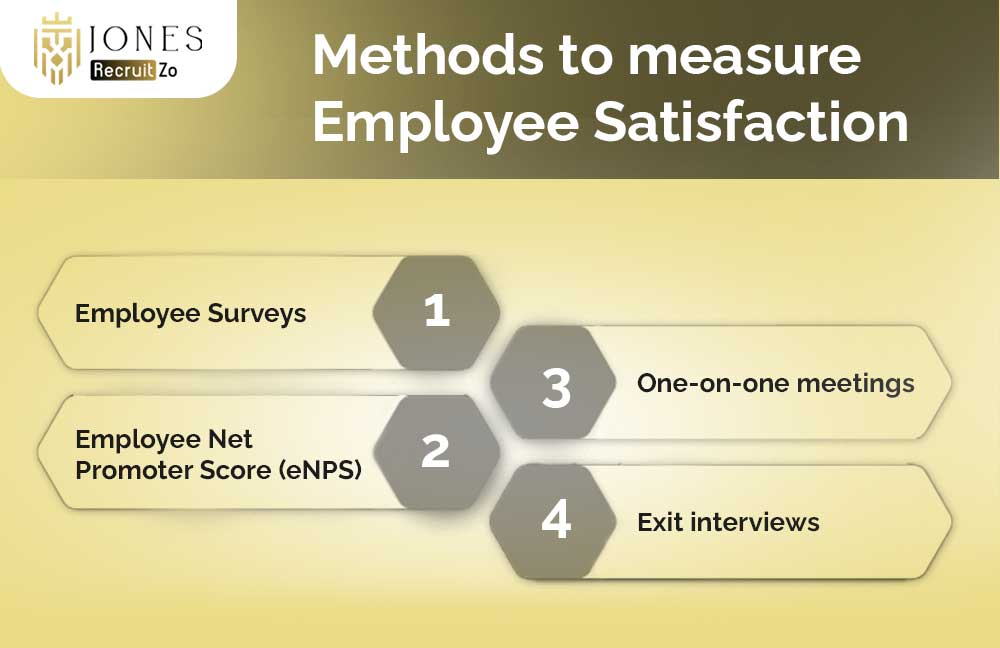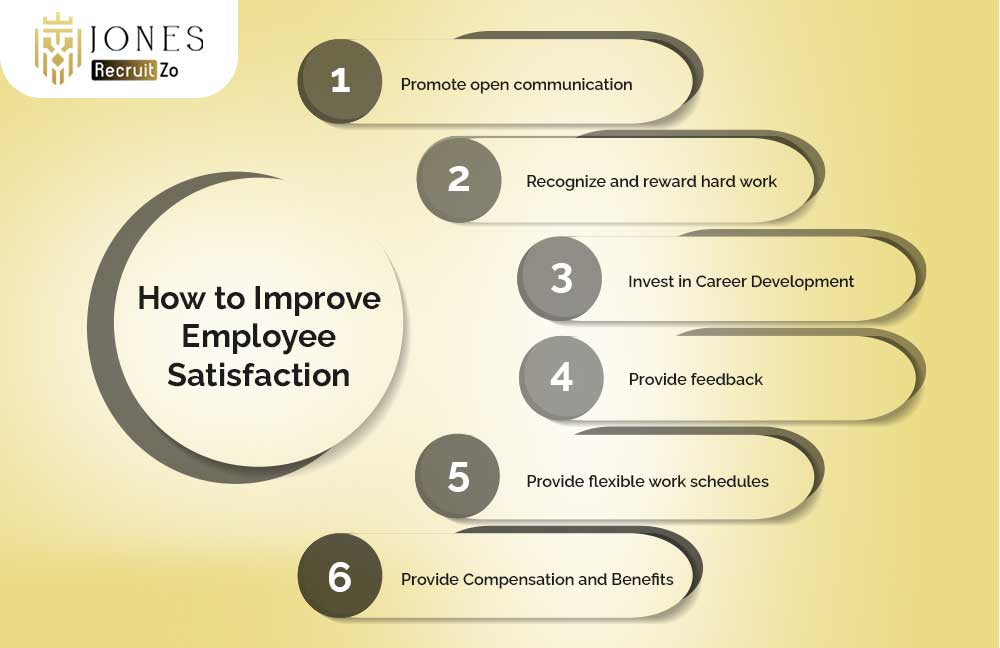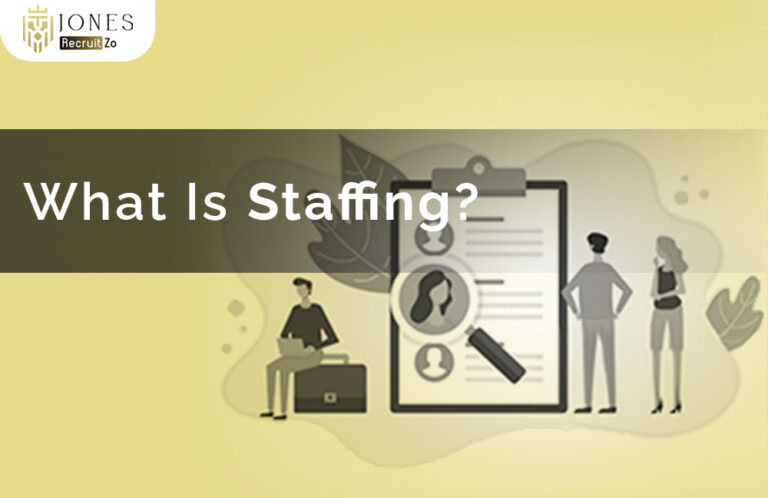What is employee satisfaction?
Employee satisfaction can be defined as the most happiness and contentment employees derive from their job, workplace, and overall work environment. It amounts to an experience in the perception of factors including work-life balance, career advancement opportunities, pay, and relationships with co-workers and managers.
Measurement of employee satisfaction helps to understand what needs would be fulfilled along with an effective culture of work, making it a successful environment.
Why is employee satisfaction important?
Understanding the importance of employee satisfaction is vital for ensuring long-term organisational success. Satisfied employees are more likely to stay loyal, perform better, and contribute positively to the work environment.
-
Reduced turnover
It is a fact that employee satisfaction reduces the levels of turnover drastically. Employees who get recognition and appreciation for what they do tend to leave less often for greener pastures. Therefore, heavy recruitment costs are saved, and retention of some quality human resources with the organisation is achieved simultaneously.
-
Increased productivity
Happy employees are more engaged and motivated. They render a productivity boost when happy and have somebody behind them. However, enjoying their work lets employees complete certain tasks easily and makes them achieve comparatively better than before.
-
Enhances Retention
It will help your employee retention if employees find their jobs in order. Employees can easily attach themselves to their organisation’s goals and visions, which will reduce any disruption that turnover creates.
-
Strengthens Employer Brand
Usually, such organizations tend to have bright names as they boast a sky-high employee satisfaction index. The employer brand portrayed will mark the index as high in the area of achievement to be so glaringly bright in culture.
-
Promotes Teamwork and Collaboration
So happy employees will usually be relationally connected in a workplace with opportunities for interaction to achieve productivity. Positive morale and mutual respect develop better teamwork, hence improving overall performance within an organisation.
How to Measure Employee Satisfaction

One of the significant ways by which organisations can identify the particular areas they need to improve on and where they need to devise the strategies to make the workplace experience for employees much better is through measuring employee satisfaction.
-
Employee Surveys
Employee surveys are the very reliable means through which one can get to know the employee’s levels of satisfaction. Employees can be subjected to surveys that could include questions on job satisfaction, the workplace, and also the various relationships with management, which are good feedback sources.
-
Employee Net Promoter Score (eNPS)
eNPS means whether an employee would ever recommend his/her employer as a place for them to work. This score helps in taking an immediate view of employee satisfaction and loyalty toward an organisation.
-
One-on-one meetings
In most cases, a regular one-on-one meeting between an employee and his/her supervisor will promote an open avenue for communication. It can help determine an individual’s problems toward job satisfaction and prove to the employee that their input is of consideration.
-
Exit interviews
Exit interviews give the explanation for exiting an organisation, as most times it tells the reasons behind the attrition of employees in the company. Knowing the reasons makes an organisation understand gaps so that it can narrow the satisfaction levels of current and new employees.
How to Improve Employee Satisfaction

Improving employee satisfaction involves putting up measures directed at providing an ambience of care and creating an engaging workplace.
-
Promote open communication
Open communication allows staff members to raise their concerns and voices by sharing their ideas freely. Transparency and honesty in communication quickly create trust and help to solve problems.
-
Recognise and reward hard work
A morale booster and source of satisfaction for employees is recognition for their contribution. Whether given verbally, through awards, or through incentives, recognition makes employees feel that their contribution through hard work is noted.
-
Invest in Career Development
Offering Career developmental opportunities for career growth will definitely contribute to the increased satisfaction of employees with their jobs since training programs and mentoring, as well as the clearly defined advancement route, would show the employees that the organisation invests in them.
-
Provide feedback
Regular feedback should improve all employees’ perception of their performance and the areas where they ought to learn. Constructive feedback in a very supportive way could therefore create a developing atmosphere within an organisation.
-
Provide flexible work schedules
Working flexibly has become increasingly popular among people looking at the advantage of having personal affairs, stress-free. Flexible hours, or letting someone work from home as an alternative to office work, improve the overall employee well-being.
-
Provide Compensation and Benefits
Most said intrinsic happiness comes from competitive remuneration and comprehensive employee benefits. Pay fairly, provide health benefits, and offer some perks that may simply show how much the organisation values the employee.
Employee Satisfaction vs. Employee Engagement
These two concepts are different but related. Whereas satisfaction refers to all the emotions and contents a person feels with his current employment, engagement is related to the commitment or involvement of an employee in the work and organisational goals. While an efficient employee can be said to be satisfied, an employee engaged with the organisation will actively go out to meet a purpose or objective.
Employee satisfaction is one of the cornerstones of organisational success. Once the organisation can understand and measure according to the satisfaction drivers and come up with interventions, it will be able to create the same healthy culture where employees and organisations can benefit.
FAQs
1) What is employee satisfaction?
Employee satisfaction refers to the level of happiness and contentment employees feel towards their job, workplace, and overall work environment. It reflects how well an organisation meets employees’ needs, including work-life balance, compensation, career growth, and workplace relationships.
2) What’s the difference between employee satisfaction and employee engagement?
Employee satisfaction focuses on how content employees are with their job and workplace, while employee engagement is about their commitment and enthusiasm toward organisational goals. Satisfied employees may enjoy their roles, but engaged employees go further by actively contributing to organisational success.
3) Why is employee satisfaction important?
Employee satisfaction is important because it reduces turnover, boosts productivity, strengthens the employer brand, and fosters teamwork and collaboration. Satisfied employees are more likely to stay loyal, perform better, and contribute to a positive workplace culture.
4) How to Improve Employee Satisfaction?
To improve employee satisfaction, organisations can promote open communication, recognise and reward achievements, invest in career development, provide constructive feedback, offer flexible work schedules, and ensure competitive compensation and benefits. These strategies create a supportive and engaging work environment.









